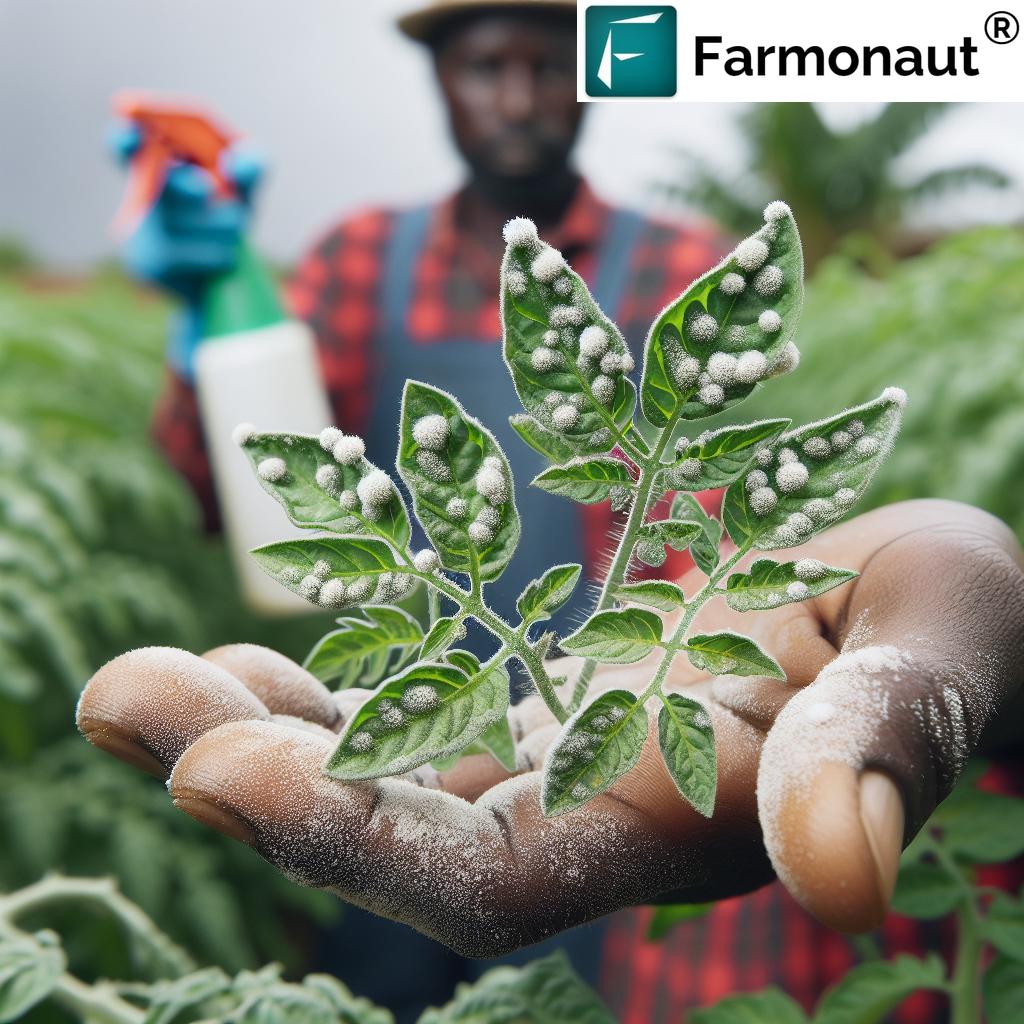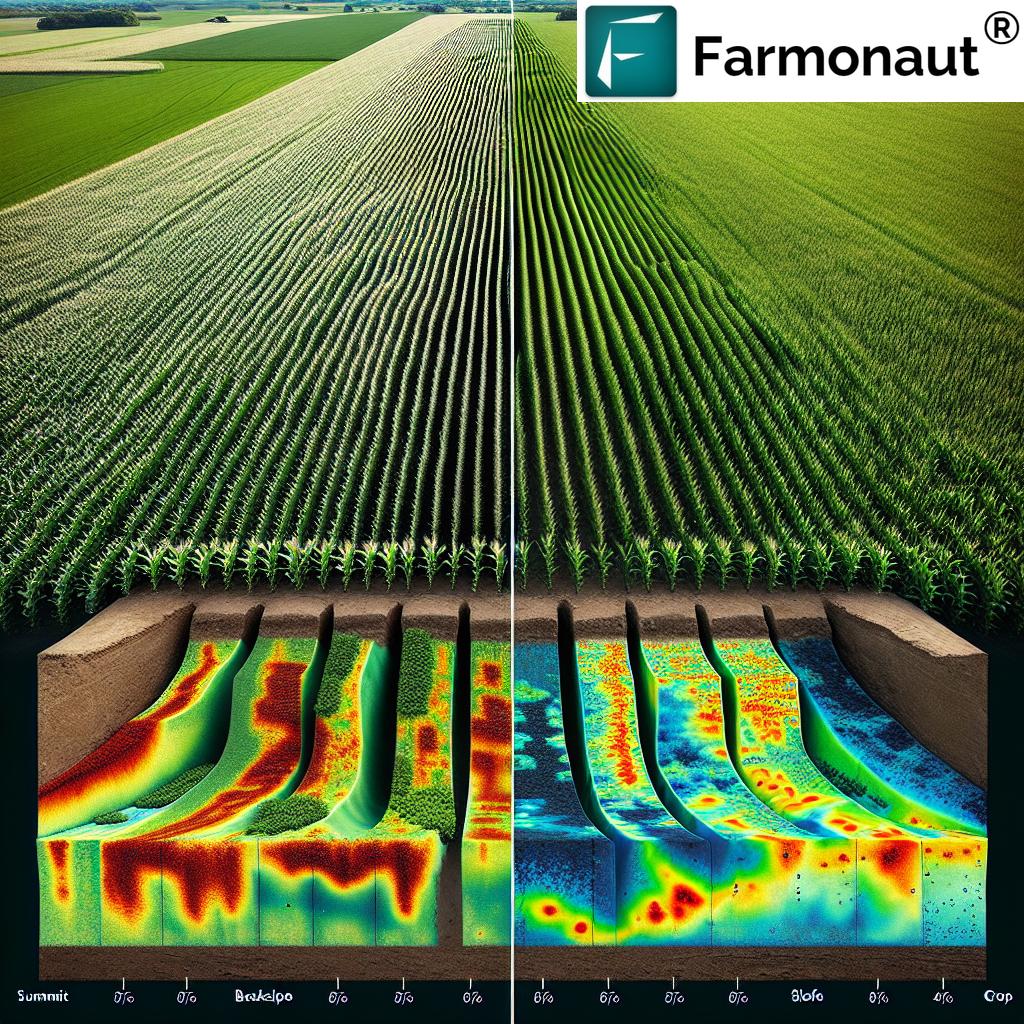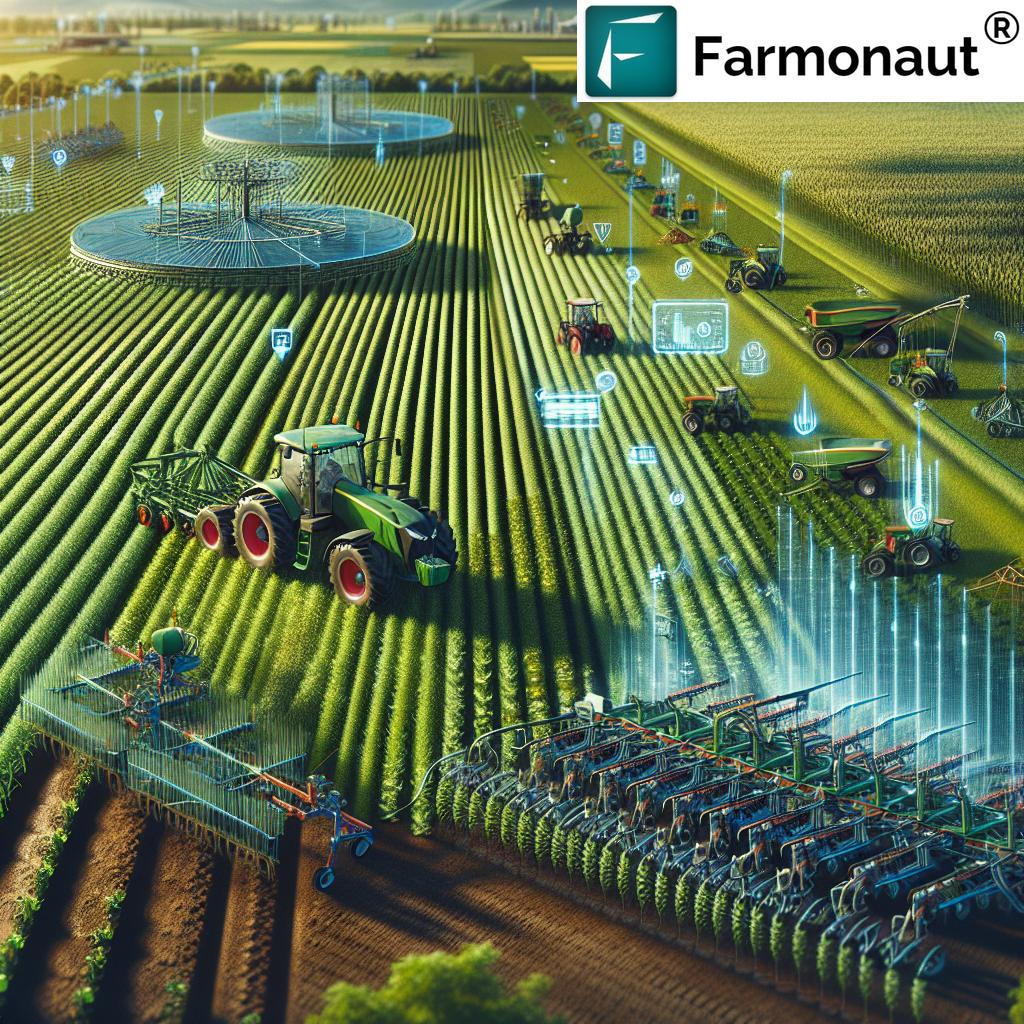Table of Contents
- Introduction: The Shift to Affordable Cultivation Optimization in 2025
- Cultivation Optimization in Farming: A 2025 Overview
- Affordable Options for Cultivation Optimization in Farming
- Best Cultivation Optimization Tools for Farmers in 2025
- AI Sprayer Optimization: Transforming Crop Protection
- Agricultural Supply Chain Optimization: Post-Harvest to Market
- Affordable Farm Tractor Insurance & Risk Management
- Comparative Table: Cultivation Optimization Tools & Platforms 2025
- Farmonaut’s Accessible Technologies for Farm Optimization
- FAQ: Affordable Cultivation Optimization Tools for Farmers 2025
- Conclusion: Embracing Technology & Efficiency for a Resilient Future
Affordable Cultivation Optimization Tools for Farmers 2025
“AI sprayer tools can reduce pesticide use by up to 30%, optimizing costs and minimizing environmental impact for farmers.”
In 2025, agriculture stands at the forefront of technological transformation, marked by an urgent need for affordable options for cultivation optimization in farming. With rising input costs and unpredictable climate conditions, the demand for innovation is greater than ever. Digital tools, AI-driven systems, supply chain platforms, and tailored insurance products are increasingly pivotal in helping farmers optimize productivity, lower expenses, and manage risk.
This comprehensive guide walks through the key affordable cultivation optimization solutions, from AI sprayers and remote-sensing sensors to smart supply chain management and cost-efficient insurance—all accessible to farmers of various scales in 2025. We will explore trending strategies, review top cultivation optimization tools for farmers, and detail how solutions provided by companies like Farmonaut are making high-impact tech affordable worldwide.
Cultivation Optimization in Farming: A 2025 Overview
The agriculture sector continues to embrace innovation and tech adoption to maximize crop yield, bolster climate resilience, and minimize input costs. The new era of cultivation optimization blends traditional practices with data-driven strategies, making high-impact productivity gains achievable for both smallholder and large-scale farmers.
- Optimization focuses on improving input use (like fertilizer, water, and agrochemicals), efficient scheduling (sowing and harvesting), and data-backed resource management.
- Emerging technologies—including AI-powered decision support systems, soil health monitoring sensors, and remote imaging—are increasingly accessible and affordable in 2025.
- Risk-mitigating insurance products and improved supply chain platforms help ensure profitability, asset protection, and sustainability for farmers worldwide.
The convergence of AI, IoT, and cloud platforms drives the evolution of agricultural optimization tools, ensuring even modestly resourced farmers can access powerful solutions to manage risk, cut costs, and grow better crops in a volatile environment.
Affordable Options for Cultivation Optimization in Farming
“Supply chain innovations in 2025 are projected to cut farm-to-market time by 20%, enhancing product freshness and profits.”
For farmers seeking affordable options for cultivation optimization in farming, a range of effective, accessible strategies and tech solutions have gained significant momentum. Below, we break down key technologies and methodologies that reduce costs and boost productivity without requiring major upfront investment:
1. Soil Health Monitoring Using Low-Cost Sensors
- Soil moisture and nutrient sensors have become more budget-friendly, enabling farmers to precisely apply fertilizer and irrigation according to real-time data.
- These sensors help understand nutrient profiles and monitor moisture levels at various soil depths, supporting tailored field management.
- Data-driven application of inputs leads to cost reduction, better yield, and environmental sustainability.
2. Mobile Apps for Localized Advice
- Farmers can now use mobile apps for localized weather forecasts, planting calendars, and scheduling advice.
- Such apps help optimize sowing and harvesting based on real-time environmental conditions, reducing crop failure risk.
- Many platforms, including Farmonaut’s mobile and web apps, offer plug-and-play guidance accessible in remote rural areas.
3. Drone-Based Imaging & Multispectral Cameras
- The cost of drone imaging and multispectral cameras has dropped drastically, allowing even small and medium farms to perform quick crop health assessments without costly manual inspections.
- These affordable technologies help rapidly identify pest infestations, disease outbreaks, and nutrient deficiencies.
- Farmers can then take timely corrective measures, ensuring minimal loss and better harvest quality.
4. Automated Smart Irrigation Systems
- Affordable smart irrigation systems use data from soil sensors to automate water application, reducing water waste and energy costs.
- Integration with mobile and cloud platforms enables remote management and optimization from anywhere.
These affordable strategies have gained popularity in recent years, transforming the way farmers manage crops and inputs.
Best Cultivation Optimization Tools for Farmers in 2025
The best cultivation optimization tools for farmers in 2025 embody the intersection of affordability, scalability, and technological advancement. These tools empower farmers to make data-driven decisions and precision applications all season, all while controlling costs and enhancing resource efficiency.
1. Cloud-Based Decision Support Systems
- Leveraging cloud platforms that aggregate data from soil sensors, weather stations, and satellite imagery, farmers gain customized recommendations directly to smartphones or tablets.
- These decision support tools use machine learning to predict crop stress, optimize irrigation schedules, and suggest soil fertility plans (e.g., crop rotation, input adjustment).
- Farmonaut’s AI-based advisory systems, like Jeevn AI Advisory Tool, provide real-time, satellite-driven insights—directly supporting productivity, efficiency, and sustainability.
2. AI-Driven Soil, Crop, and Water Management
- Integrated AI modules interpret NDVI (Normalized Difference Vegetation Index) and soil moisture data to guide fertilizer application and irrigation scheduling.
- AI-based pest and disease alerting systems use remote sensing to anticipate outbreaks, allowing farmers to treat problems proactively and only where needed.
3. Smart Fleet and Farm Resource Management Tools
- Farmers use digital fleet management tools to monitor and optimize tractor/machinery use, reduce downtime, and schedule maintenance.
- Farmonaut’s Fleet Management Platform is a leading example, harnessing satellite and telemetry data to support resource allocation for all sizes of farm operations.
4. Blockchain-Based Traceability for Supply Chains
- With growing demand for transparency, farmers and suppliers seek blockchain-based traceability to ensure product authenticity and to meet regulatory requirements.
- Farmonaut’s Traceability Solution empowers agricultural enterprises and cooperatives with simplified, cost-effective blockchain technology.
5. Environmental Monitoring Platforms
- Technologies that provide carbon footprint tracking and environmental impact data are now within reach for more farmers, supporting compliance, sustainability, and potential revenue from carbon credits.
- Farmonaut’s Carbon Footprinting service gives farms and agri-businesses actionable environmental insights for long-term resilience.
6. Integrated Mobile Platforms
- User-friendly mobile apps, like Farmonaut’s, combine remote sensing, AI advisories, weather data, and supply chain tracking in a single solution, making optimized farming accessible anywhere.
AI Sprayer Optimization: Transforming Crop Protection
AI sprayer optimization marks a turning point in crop protection and cost efficiency. Powered by robust machine vision and deep learning, AI sprayers can quickly scan fields, identify weeds and pests with pinpoint accuracy, and target application of agrochemicals only where truly needed.
Key Benefits of AI Sprayers in 2025:
- Reduces agrochemical costs by up to 30% for many farmers.
- Minimizes environmental impact by avoiding blanket spraying and chemical runoff.
- Lowers labor requirements, freeing up workers while expanding land coverage.
- Portable drone-based and vehicle-mounted systems are accessible to small and medium-scale farms, not just large agricultural enterprises.
- Timely detection and intervention lowers the risk of full-field infestations or disease outbreaks.
Accessible AI sprayer technology leverages satellite imaging and real-time remote data—creating an intelligent feedback loop where every spray is calculated, and every action is optimized. This not only reduces farmer risk by controlling disease outbreaks but also enhances productivity through targeted intervention.
Agricultural Supply Chain Optimization: Post-Harvest to Market
The journey from field to market is fraught with challenges, especially for smallholders in underserved regions. Agricultural supply chain optimization is a key driver of both profitability and sustainability for modern farmers.
Key Components of Affordable Supply Chain Solutions
- Digital Market Platforms: Online networks that connect farmers with buyers and logistics partners. By reducing intermediaries, these platforms lower transaction costs and provide better price transparency.
- Cold Chain Innovations: Solar-powered refrigeration units and IoT-enabled storage monitoring systems help preserve perishables and lower wastage, especially critical for smallholder farmers with limited local infrastructure.
- Blockchain Traceability: Ensures product authenticity, combats fraud, supports quality control, and meets the growing demand from domestic and export markets for verifiable, sustainable products.
For those in need of affordable, practical supply chain management, platforms like Farmonaut’s Traceability Product are built to be plug-and-play, mobile accessible, and useful even without complex or costly infrastructure.
IoT & Remote Sensing in Storage Management
- IoT sensors enable remote monitoring of storage temperature, humidity, and product safety.
- Farmers get early warnings on spoilage risks or system failures, dramatically reducing post-harvest losses.
Affordable Farm Tractor Insurance & Risk Management
Farm machinery—tractors, planters, and sprayers—are vital yet costly assets. Managing the associated risk is now simpler and more affordable than ever:
Tractor & Equipment Insurance: What’s New in 2025?
- Usage-based insurance policies leverage telematics (GPS trackers and device data) to calculate premiums based on actual operation hours and usage style. Low usage farmers see cost savings on premiums.
- Microinsurance products with rapid, claim-by-mobile support enable smallholders and remote farmers to protect assets without large upfront fees.
- Digital claims processing speeds up compensation following theft, accident, or natural disaster.
- Examples of satellite-integrated insurance processes: Satellite-based verification (including Farmonaut’s Insurance Verification Solution) streamlines risk checks and reduces fraud, making affordable farm tractor insurance more universally accessible.
How Satellite and Data-Driven Insurance Lowers Barriers
- Reduces need for on-site inspection, making rapid, remote verification possible for insurance providers.
- Helps providers tailor risk coverage to real field conditions, further lowering overall premium costs for most farms.
Farmers now have better peace of mind, knowing their equipment—and by extension, their livelihood—is protected with flexible, affordable, and accessible insurance tailored to their situation in 2025.
“AI sprayer tools can reduce pesticide use by up to 30%, optimizing costs and minimizing environmental impact for farmers.”
Comparative Table: Cultivation Optimization Tools & Platforms 2025
| Tool Name | Technology Type | Key Features | Estimated Cost | Productivity Boost | Cost Reduction Potential | Risk Reduction Measures | Best Suited For |
|---|---|---|---|---|---|---|---|
| Farmonaut Jeevn AI Advisory Tool | AI-Driven Decision Support Platform | Real-time crop & weather insights, custom sow/irrigation scheduling, NDVI analysis, crop stress detection | $60-120/season (subscription) | 15–30% | 10–20% | Satellite crop monitoring, predictive alerts, remote advisory | Small–Medium Farms |
| Smart AI Sprayer (Market Standard 2025) | AI-powered Crop Protection Sprayer | Computer vision weed/pest detection, targeted spraying, usage analytics | $800–1,500/unit (or rental per ha) | 10–20% | Up to 30% | Minimizes over-application, detects outbreaks | Small–Large Farms |
| Soil Health Sensor Kit (2025 Low-Cost Model) | Soil Nutrient & Moisture Sensors | Multi-depth soil monitoring, real-time nutrient status, irrigation alerts | $120–350/season | 8–18% | 15–20% | Prevents overfertilization, optimizes water | Small–Medium Farmers |
| Farmonaut Traceability Solution | Blockchain-Enabled Supply Chain Platform | Product authentication, supply chain transparency, regulatory readiness | $50–100/season | Up to 5% | 1–4% | Fraud & spoilage alerts, compliance tools | All farm sizes, Exporters |
| IoT Cold Storage System | IoT-based Climate Control Device | Remote storage temperature/humidity monitoring, spoilage alerts | $400–1,500/unit (purchase or lease) | 6–14% | 8–15% | Reduces post-harvest risk, alerts & failsafes | Small–Medium Farms, Cooperatives |
| Farmonaut Fleet Management Platform | Satellite & Telematics-Based Resource Platform | Real-time vehicle/machinery tracking, digital maintenance logs, use-based analytics | $75–150/season | 10–18% | 5–10% | Lowers machinery breakdown & theft risk | Medium–Large Farms |
| Usage-Based Farm Tractor Insurance | Insurance (with Telematics) | Dynamic premiums, digital claims, satellite damage assessment | $90–250/year (coverage dependent) | n/a | Varies, often 8–18% | Custom coverage, theft/disaster risk mapping | All Farms (best for small/medium) |
Note: All estimated percentages and pricing are based on published industry averages for 2025. Actual results may vary by region and operational scale.
Farmonaut’s Accessible Technologies for Farm Optimization
As a satellite technology company dedicated to democratizing agricultural innovation, we at Farmonaut empower farmers—from individuals to agribusinesses and governments—by making satellite-driven insights both affordable and accessible worldwide.
- Our satellite monitoring platform combines advanced multispectral imagery, AI analytics, and blockchain to deliver actionable crop health, soil, and resource data.
- Real-time AI-based advisory systems (Jeevn AI) offer crop- and field-specific recommendations, leveraging cloud platforms that aggregate local conditions, historical data, and predictive weather.
- Through our Fleet & Resource Management Tools, users—especially business and infrastructure operators—enjoy seamless coordination and lower operational costs.
- Our blockchain-based product traceability ensures transparency, compliance, and trust for producers engaged in both domestic and export supply chains.
- For those interested in sustainability, our Environmental Impact Monitoring provides carbon emission insights critical for climate-resilient agriculture.
- All Farmonaut solutions—including our API (try Farmonaut API here)—are accessible via Android, iOS, web apps, and integration-ready API endpoints (see detailed Developer Docs for integration guidance).
We offer tailored, flexible subscriptions with full transparency, designed to serve the unique needs of every user across the agricultural sector.
FAQ: Affordable Cultivation Optimization Tools for Farmers 2025
What are “affordable cultivation optimization tools” in 2025?
These are cost-effective technologies and strategies that help farmers optimize inputs (such as water, fertilizer, crop protection), improve yields, and cut unnecessary expenses. Examples include smart soil sensors, AI advisory systems, drone imaging equipment, and supply chain tracking platforms.
How does AI sprayer optimization lower costs?
AI-powered sprayers use computer vision and deep learning to identify the exact locations of weeds or pest outbreaks. This allows for targeted spraying, reducing chemical use (and costs) by up to 30% compared to traditional methods, while also protecting the environment.
What kinds of farmers benefit most from these technologies?
While all farmers gain from affordable optimization tools, small to medium-sized operations see the most dramatic improvements due to lower entry costs for sensors, cloud platforms, and modular equipment. Digital insurance and microloans also make risk management accessible for underserved communities.
Are supply chain optimization solutions expensive to implement?
No, many supply chain improvements are now affordable for even single-farm operators. Examples include mobile traceability apps, IoT refrigeration units, and digital market platforms for direct farm-to-buyer interaction.
How can I access Farmonaut’s affordable cultivation optimization tools?
You can start using Farmonaut’s satellite monitoring, AI advisory tools, and blockchain solutions by downloading our web or mobile app. Integrations are available through our public API and detailed developer documentation.
Is affordable farm tractor insurance actually worth it?
Yes. Usage-based, telematics-powered insurance not only lowers annual premium costs but also enables faster claims and covers risks such as theft, accident, or extreme weather. For small-scale farmers, microinsurance is often a crucial safeguard against losing critical machinery.
Conclusion: Embracing Technology & Efficiency for a Resilient Future
In 2025 and beyond, affordable cultivation optimization options for farmers are setting new standards for efficiency, sustainability, and profitability in the agriculture sector. The integration of AI sprayer optimization, advanced decision support tools, tailored insurance, and next-gen supply chain management makes it possible for even the smallest farming operations to successfully battle rising costs and unpredictable risks—while maximizing both yield and quality.
With proven digital platforms, plug-and-play sensors, data-driven advisories, and rapid insurance products becoming the industry norm, every farmer—regardless of size or location—can now access the productivity, cost savings, and peace of mind that affordable optimization technology delivers.
As always, we at Farmonaut are committed to making satellite, AI, and blockchain innovations more accessible across the globe. By embracing these tools in your daily farm management, you ensure your operation is ready for the challenges of tomorrow—and build a foundation for sustainable growth in the years ahead.














